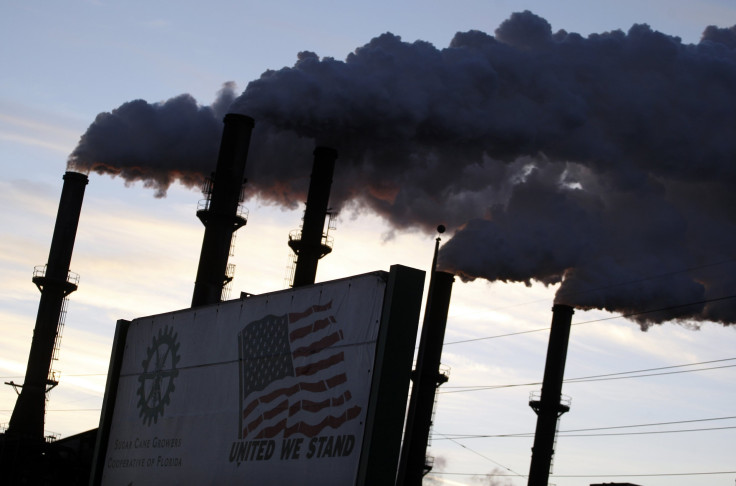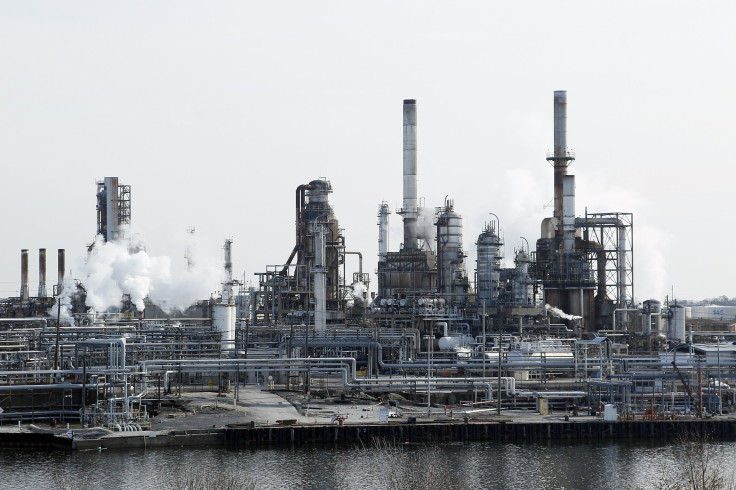Low Oil, Natural Gas Prices Driving A Building Boom In US Petrochemicals Sector: Report

The plunge in energy prices is driving a U.S. building boom for plants that turn crude oil and natural gas into motor fuels, chemicals and fertilizer.
Energy companies proposed or received approval to build 140 petrochemical projects in the last five years as falling oil and natural gas prices made it cheaper to refine and process the raw materials, the Environmental Integrity Project, a nonprofit advocacy group, said Monday. Nearly one-third of those projects, or 44 facilities, were proposed or permitted in 2015 alone.
Crude oil prices have plunged around 70 percent from their June 2014 peak of above $100 a barrel on fears of a global oversupply and softening demand. Natural gas prices touched a 17-year low last week after federal data showed a swell in inventories, spurred by the fracking boom and higher-than-normal winter temperatures.
The price collapse has proved painful for oil and gas producers, whose earnings have vanished and budgets have dissipated in recent quarters. But cheaper feedstock is a significant plus for liquefied natural gas processors and exporters, chemical and fertilizer makers and petroleum refiners.
The petrochemical sector was buoyed last week on news that global demand for its products could remain strong over the next five years. The International Energy Agency said oil demand for petrochemicals would rise roughly 2 million barrels a day from 2015 to 2021, a nearly 3 percent annual growth rate.
The Environmental Integrity Project said it compiled its list of proposed and permitted facilities by searching state and federal records for projects with special greenhouse gas permits. The U.S. Environmental Protection Agency requires operators to get permits for new facilities or significant expansions that would boost carbon dioxide emissions by at least 100,000 tons a year.

The 140 facilities, if constructed as planned, would together produce around 179 million tons of greenhouse gases per year – equal to running 39 coal-fired power plants, the group found in its report. The list doesn’t include dozens of smaller projects, including ones just below the 100,000-ton trigger for EPA permits, said Eric Schaeffer, the EIP’s executive director and former director of civil enforcement at the EPA.
He said policymakers, energy industry leaders and environmental groups often overlook the petrochemical sector in broader discussion of U.S. climate change policies. Industrial plants accounted for about 21 percent of total U.S. greenhouse gas emissions in 2013, making it the third-largest source behind electricity and transportation, which accounted for 31 percent and 29 percent of emissions, respectively, the EPA reported.
“When you see debates over where we have to go, in terms of meeting greenhouse gas goals in the U.S., I think this big wave of construction projects isn’t accounted for,” Schaeffer said.
Schaeffer said the EIP isn’t necessarily opposed to the petrochemical projects, but he said the EPA could do more to require operators to reduce emissions by installing energy-efficient technologies, adopting less energy-intensive measures and other carbon-cutting approaches.
“We really should be doing as much as we can to make sure we’re squeezing the balloon and keeping the carbon as low as possible,” he added.
The American Chemistry Council, a trade association for North American chemical manufacturers, said in response to the EIP report that the new projects could actually help lower overall greenhouse gas emissions by displacing dirtier, less-efficient production in other parts of the world. The council – whose members include the chemical divisions of Marathon Petroleum Corp. and Exxon Mobil Corp. – counted nearly 270 chemical manufacturing projects, together worth $164 billion, that were recently completed, are under construction or are in the planning phase.
“Our energy efficiency is improving,” said Jennifer Scott, a spokeswoman for American Chemistry Council.
© Copyright IBTimes 2024. All rights reserved.





















